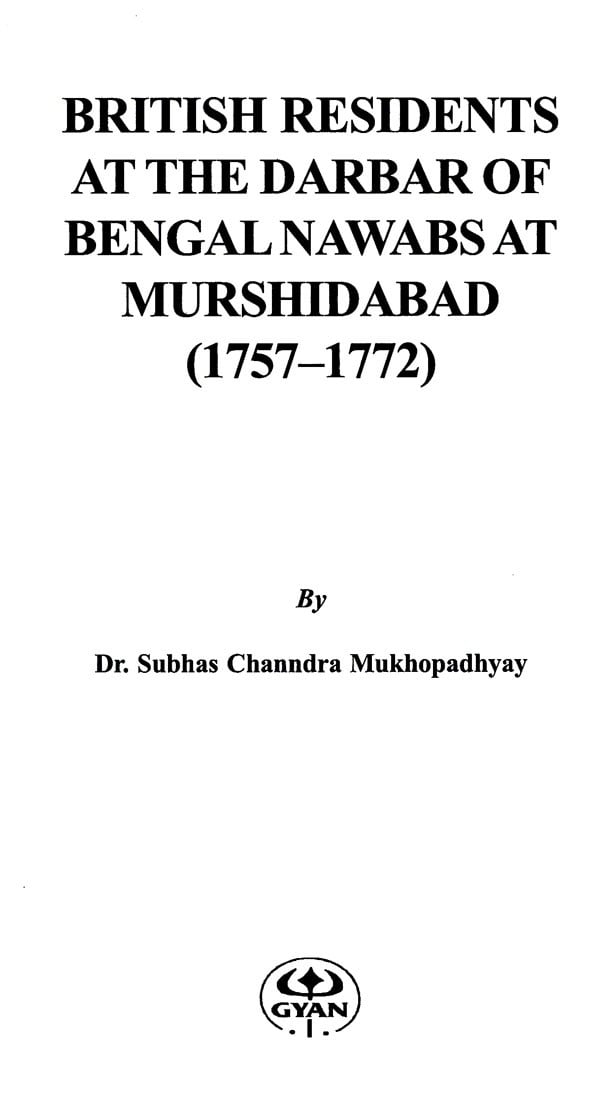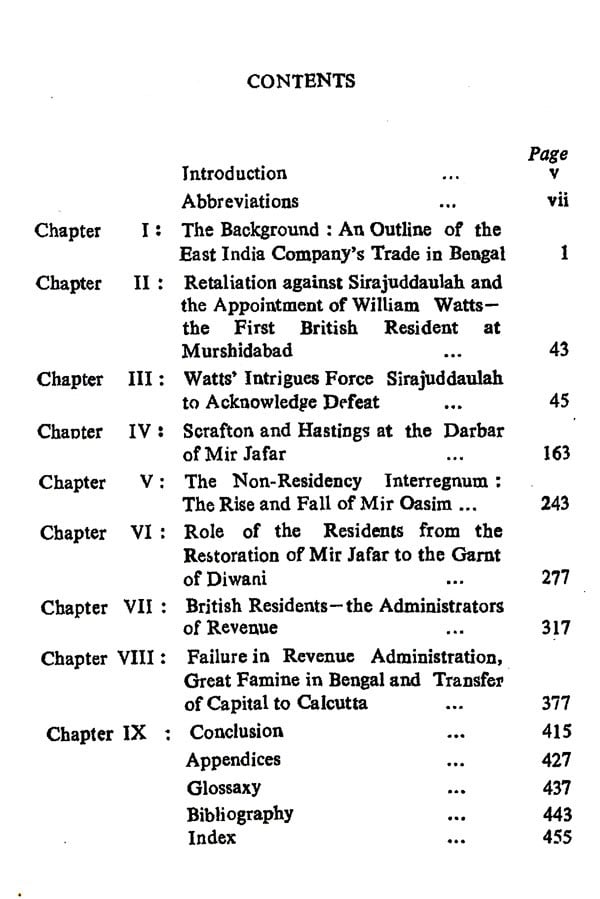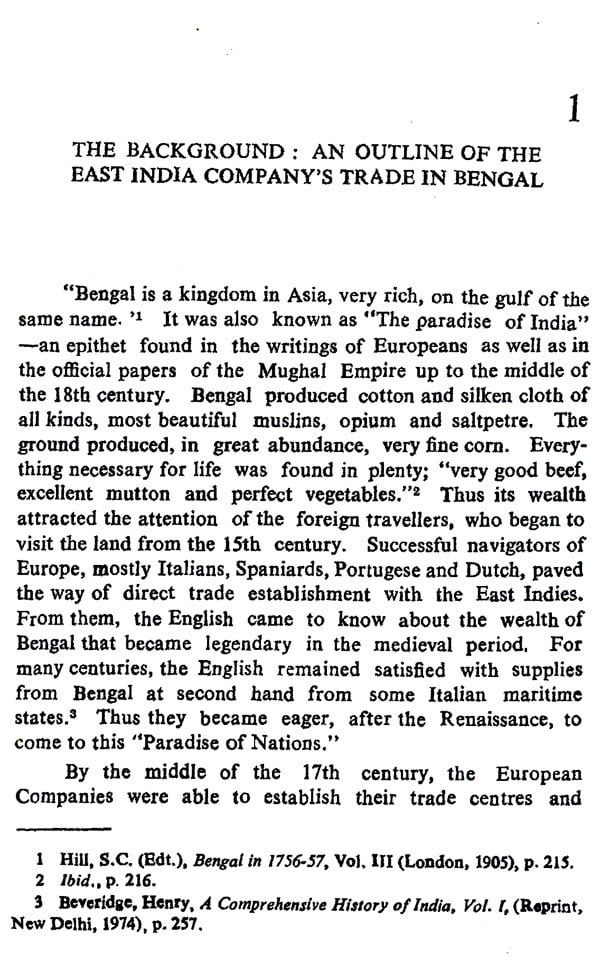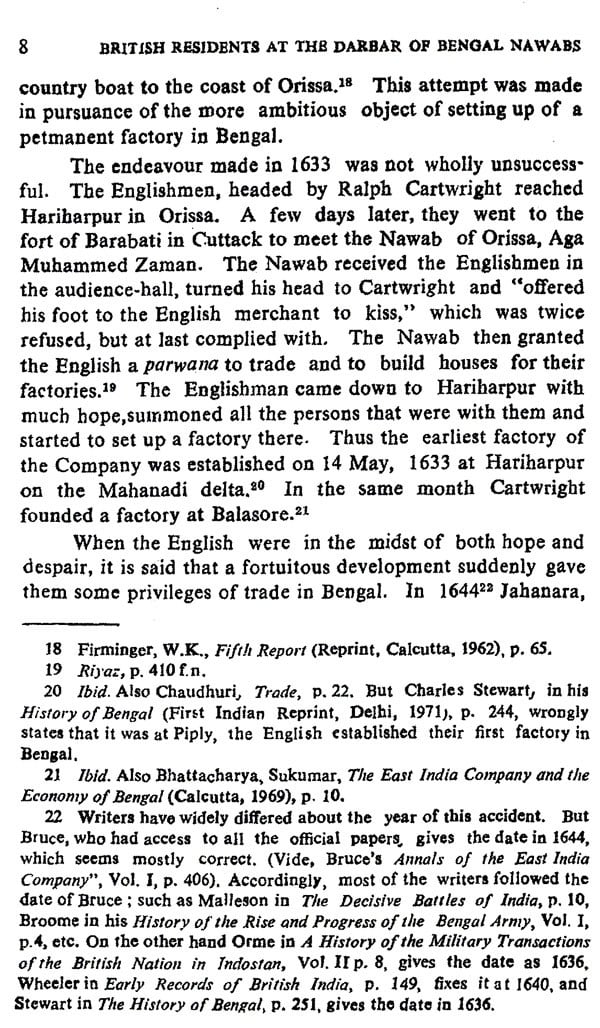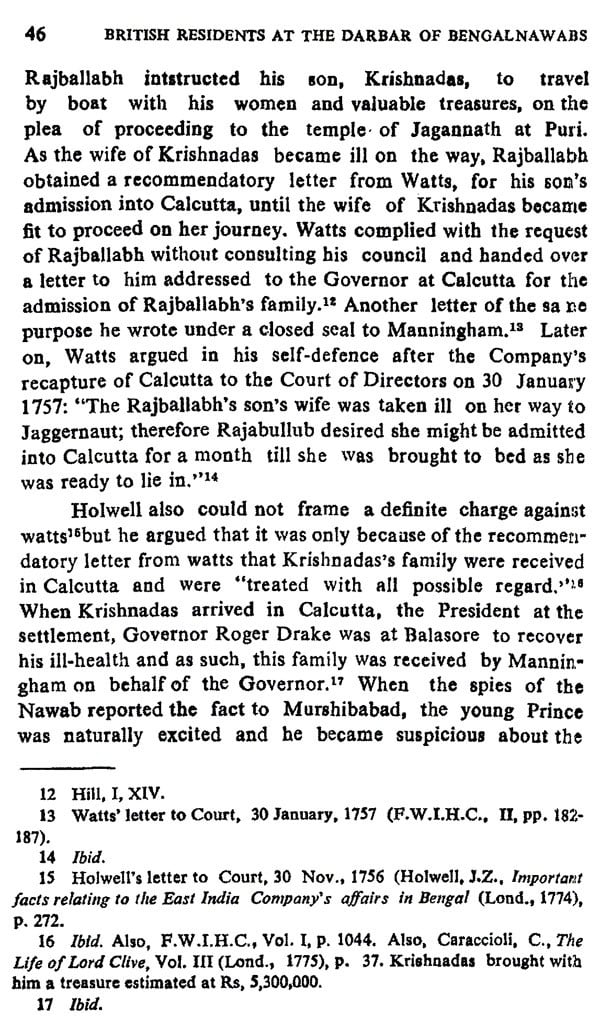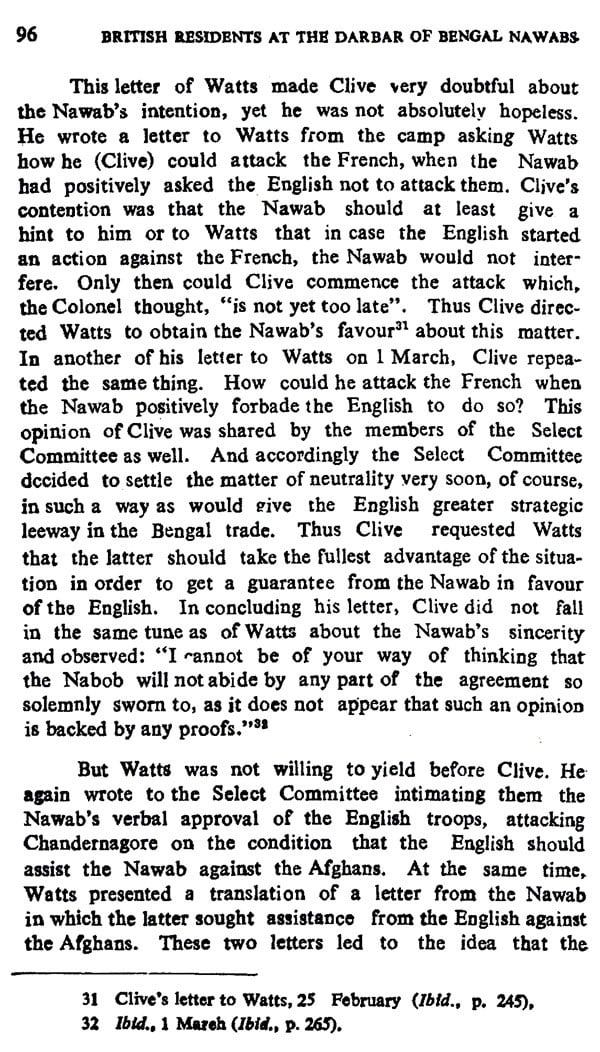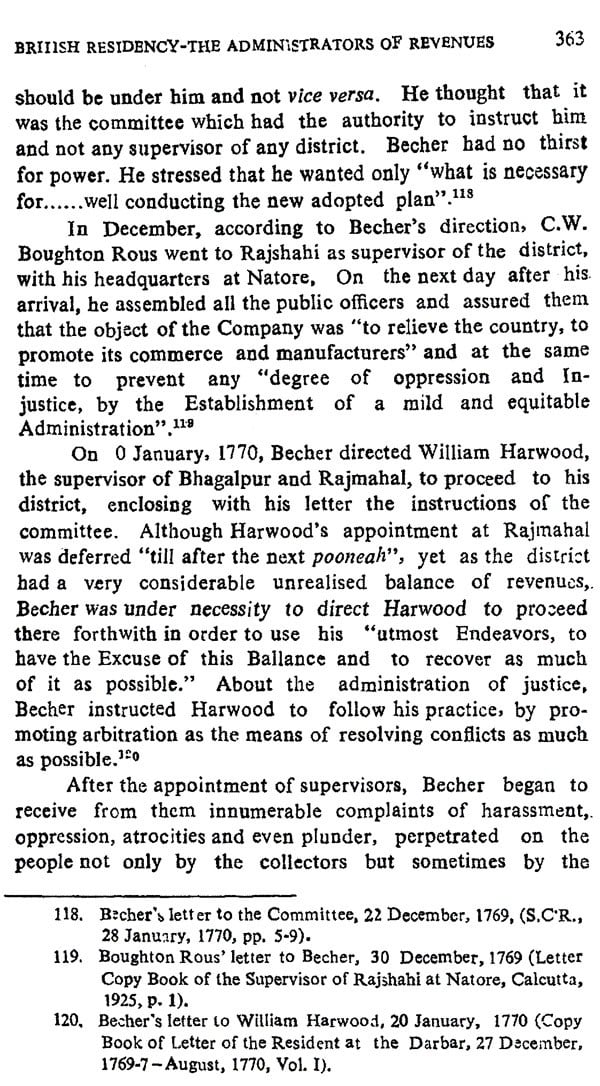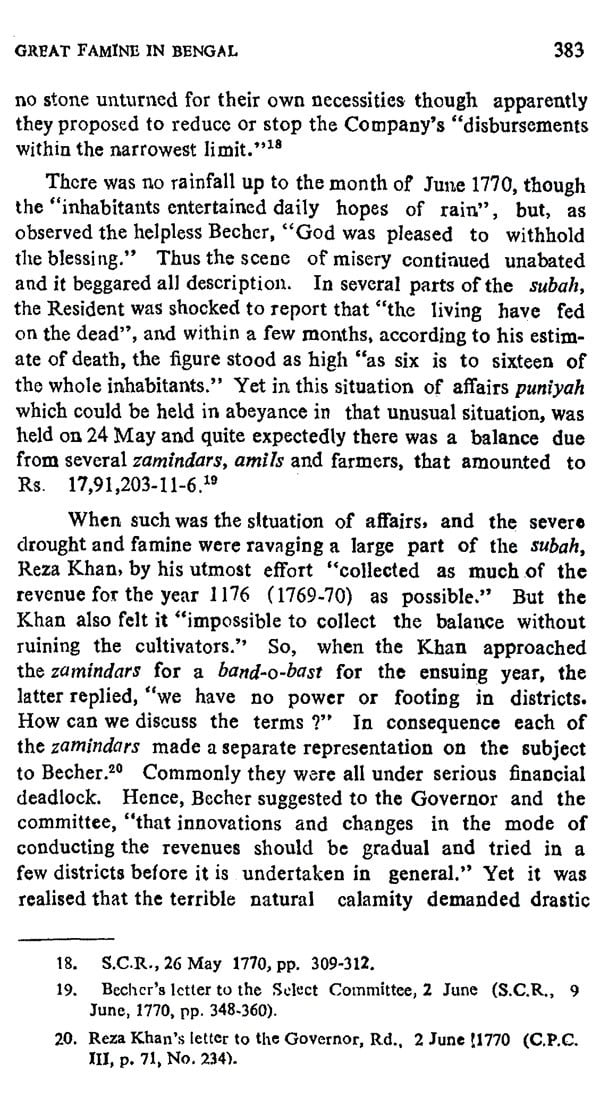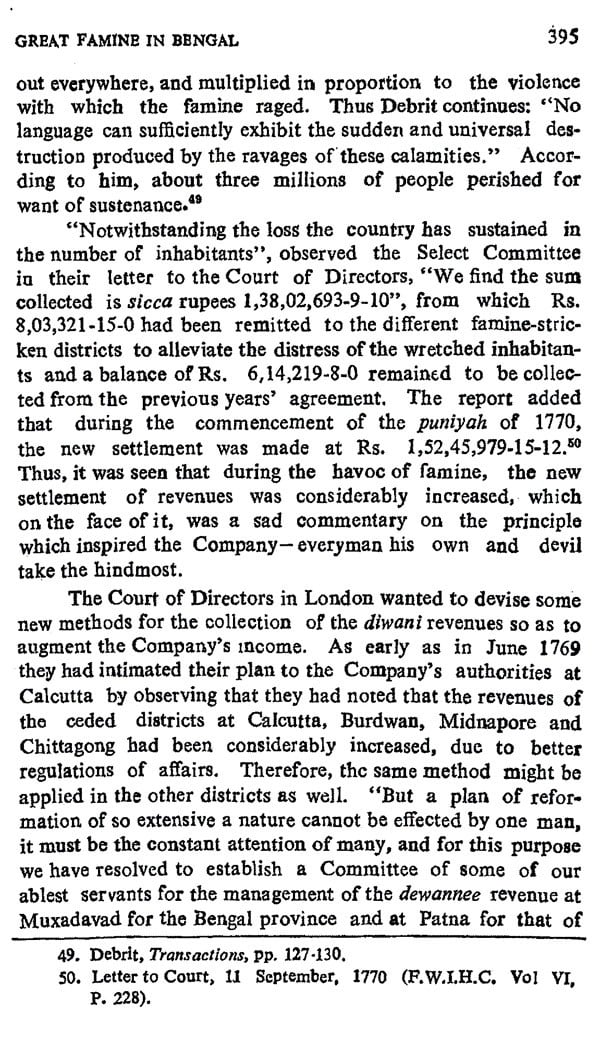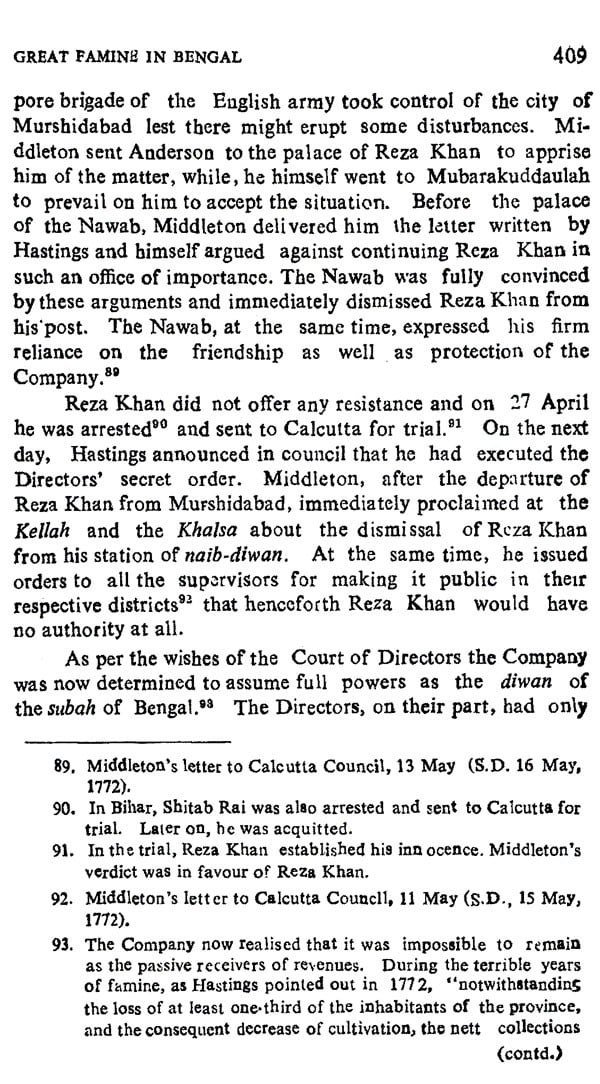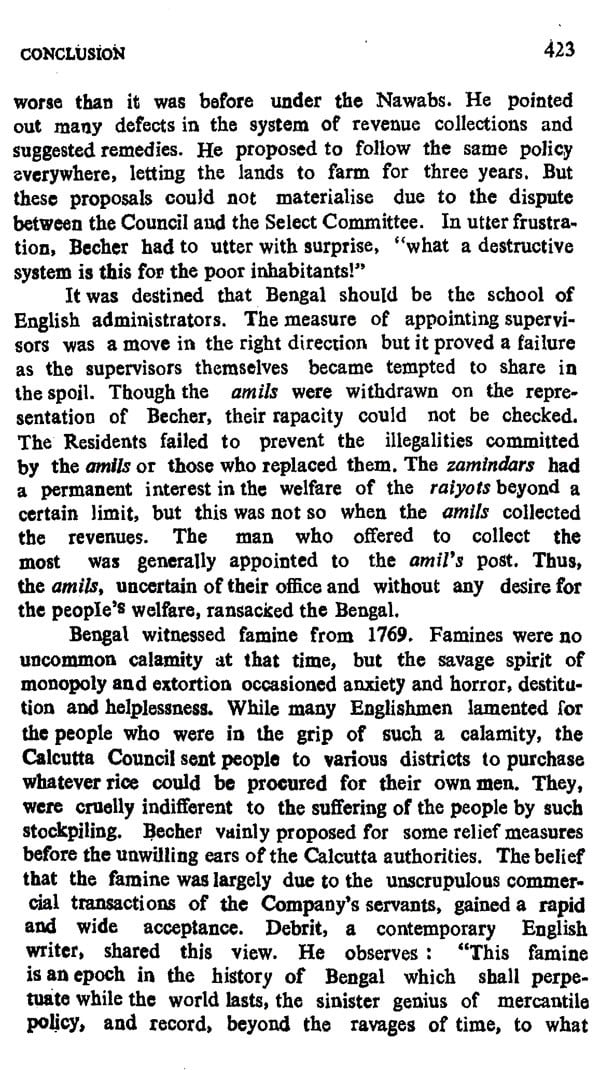
British Residents at the Darbar of Bengal Nawabs at Murshidabad: 1757-72
Book Specification
| Item Code: | UBC728 |
| Author: | S. C. Mukhopadhyay |
| Publisher: | Gyan Publishing House, New Delhi |
| Language: | English |
| Edition: | 2018 |
| ISBN: | 9788121202008 |
| Pages: | 470 |
| Cover: | HARDCOVER |
| Other Details | 9.00 X 6.00 inch |
| Weight | 670 gm |
Book Description
The office of the Resident was of great weight, next only to the Governor, but after Plassey, the Residency at Murshidabad became a guarantee of fortune. The savage spirit of monopoly and extortion occasioned anxiety and horror, destitution and helplessness. This unending rapacity and attendant vices culminated in the terrible famine, unknown to the history of mankind. The situation rumbled as far as England it was realised to undertake direct responsibility of administering the province in 1772.
Dr. Mukhopadhyay has a long standing of teaching experience since 1963. He is, at present, Reader in History, Banaras Hindu University. He has been awarded several grants for his research works from the University Grants Commission and from the Indian Council of Historical Research as well.
While sitting in judgment, the historians should be impartial in their approach. Our historians, also claim for at least occasionally, the impartiality of judges. Professor R.C. Majumdar, a doyen in the field, observes: "The purpose of the historian is the ascertainment of the Truth. His only duty is to determine guilt or innocence in the fashion of a judge in a law court." Thus the plain truth is that the apparently simple English traders of the mid-seventeenth cen- tury in Bengal, changed their colour completely in the mid-eigh- teenth century. The adventurers who had landed for purely commercial pursuits, began to craze for and actively pursued the goal of political predominance.
In the spirit of political adventurism as well as being oppressed by the subahdars of Bengal, the officials of the East India Company often came into disputes with the Mughal authorities at the end of the seventeenth century. During this time, almost every English merchant in India had a double Occupation-the trade on the Company's account as well as his own private individual trade. Realizing this, Shaista Khan -the subahdar of Bengal under Aurangzeb prevented such illegal trade. But the officials of the Company on account of their superior skill and craft established a successful maritime trade of their own. However, making of illegal profits was not confined to them alone because the subahdars also extracted money from the people by unlawful means and filled their own coffers. Shaista Khan himself took with him nine crores of rupees from Bengal, while Azim-us-Shan eight crores. Under such conditions of extortion and anarchy. the English became the Zamindar of three villages and this occupation of a Zamindari created outlook. a gradual change in their India at that time was seething with discontent. Aurangzeb closed his aged-eyes in death in 1707. His death led to the quick process of disintegration of the Mughal Empire in the first half of the eighteenth century.
His unworthy successors lacked the ability to control the situation and with the erosion of their power there was anarchy almost everywhere in the empire. Rebellion was in the air. The Sikhs, the Jats, the Raj- puts, the Rohillas, the Marathas and the Pathans jumped into the fray and jockeyed for power. The Marathas in various parts of India and the Sikhs at Lahore established their respective independent rules. Asaf Jah in Hyderabad, shujauddaulah in Oudh and Murshid Quli Khan in Bengal, usurped powers for themselves. The Jats fought for their own supremacy, while the Rohillas sought for their own homeland. In such a free- for-all situation, the European traders began to fish in the troulled waters. In the mid-eighteenth century, the English Company wan- ted to consolidate their position in Bengal as the base of their prosperity in near future. Both the expansion of their economic activities and their successes in the south against the French gave them a great boost. Thus a great craving for power arose among them. The vast increase in the Company's export trade from Bengal consolidated their economic gales and, hence, flushed with success, the Company's officers thought themselves powerful enough to build their own fortune by playing the diplomatic game for their own benefit.
Thus, at a time when India was advancing gradually to the death of the long-languishing political and social order, the British star began to rise. The chaotic condition in the country marked also the fateful augury of the ushering in of British political hegemony over the whole of this sub-continent for two centuries, till the birth of free India. The period. was dark, confused and anarchical. But this dark chapter of human history also carried the forces from which history was made. It had many things in it to learn from because it was the time when the first steps were taken, which finally moulded the shape of a nation and gave a new turn to its his- tory. Thus, essentially, the period was one of transition mar- ked by internals feuds, conspiracies and also of ferment and germination. The historical importance of the period thus can hardly be gainsaid.
Sirajuddaulah had to accept a British Resident at his darbar early in February, 1757, under the precarious circumstances of duress when the news of Ahmad Shah Abdali's pro- posed incursion to Bengal had reached him. Later this proved to be a false scare. But it was due to this mistake that the young Nawab unconsciously sowed the seed of his own ruin, as well as sealed the fate of his own countrymen. Throughout the period from 1757 to 1772, the activities of the Residents at the darbar may be divided into two broad-based phases. In the first phase, they adopted devious but successful ways of intrigue and became a constant check on the powers of the Nawabs and a thorn in his flesh till the grant of diwani in 1765.
**Contents and Sample Pages**
